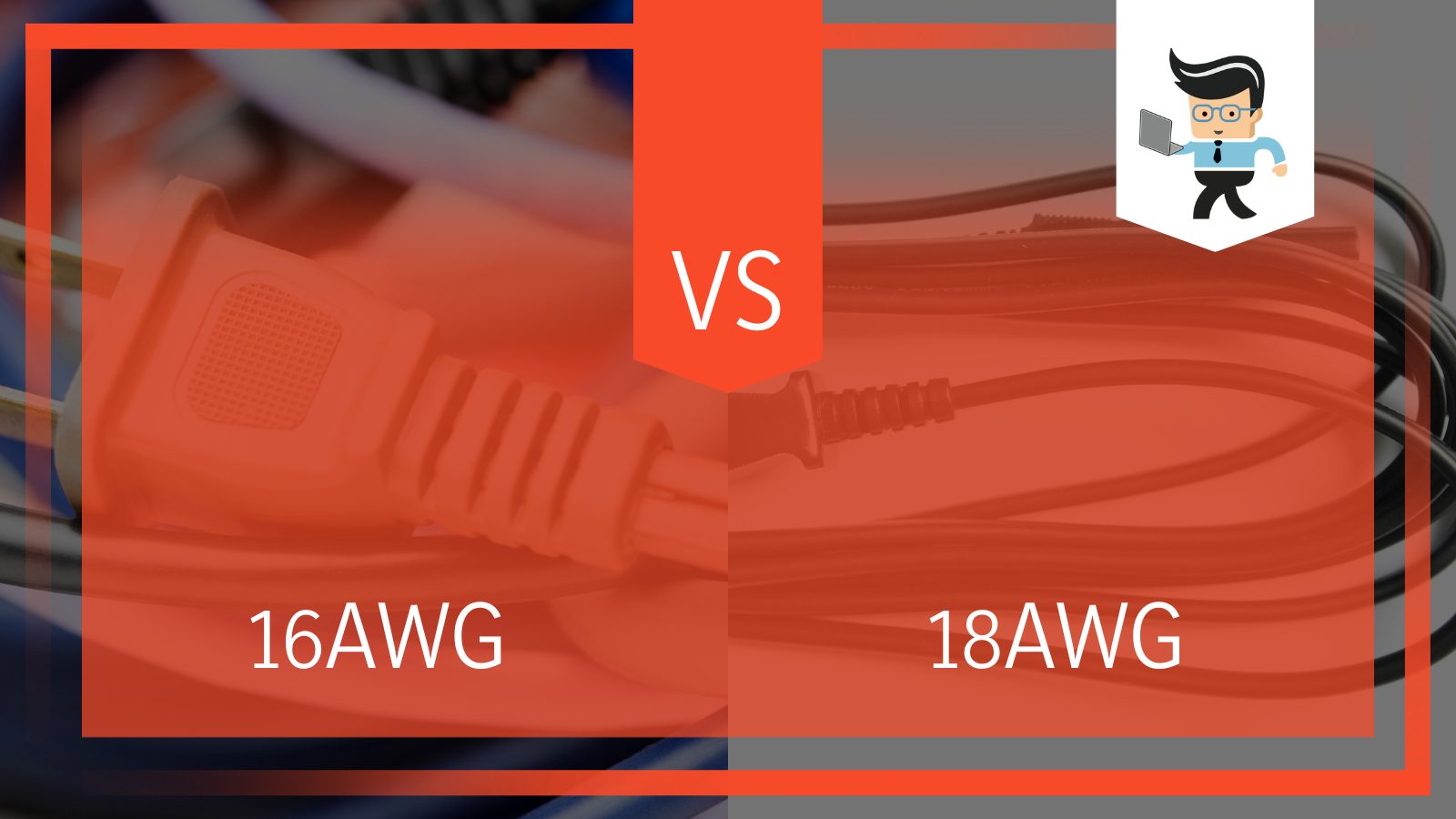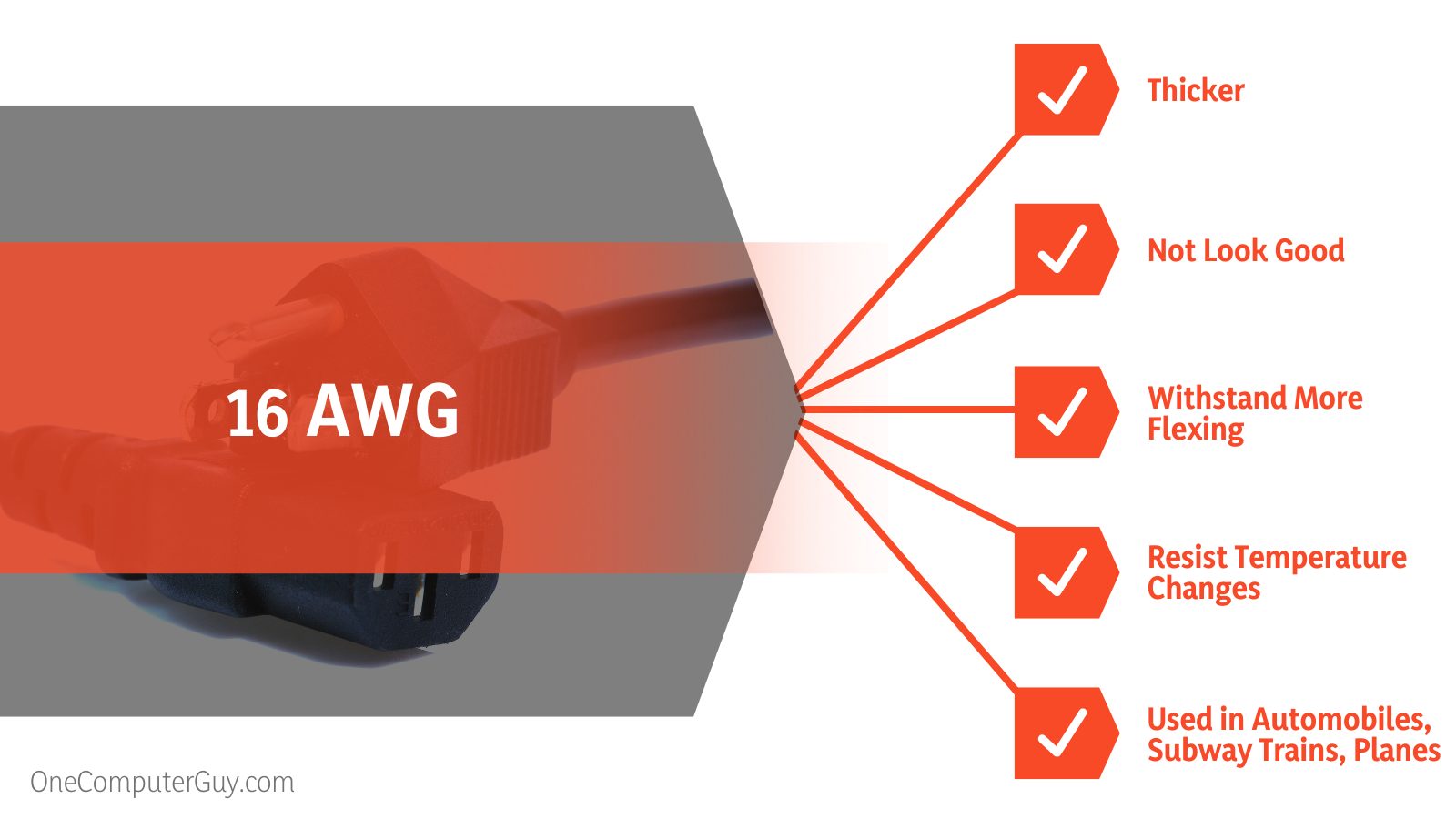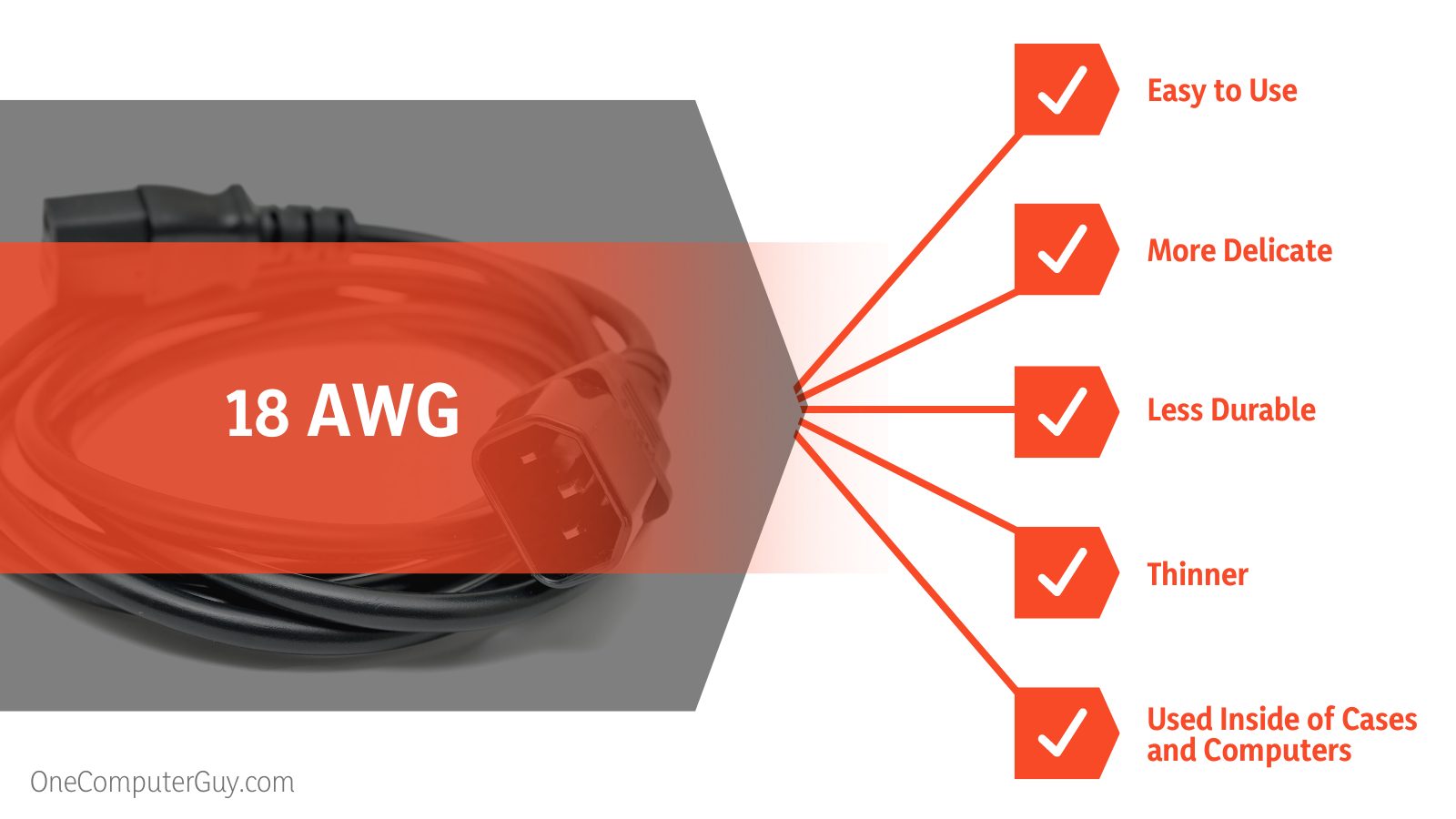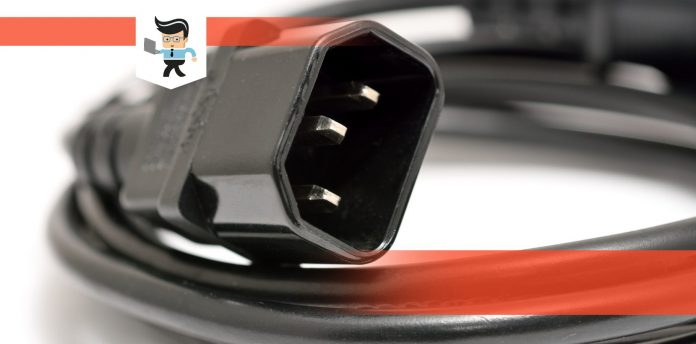When you are building your own computer, you will likely have to compare 16AWG vs 18AWG wires. You must have read about them a lot in your search for the best wires to use in your builds.

In fact, these are the two most common sizes selected by builders because they are readily available and are easy to work with. Take note, however, that there are some differences that you will need to explore.
In this article, we will discuss all those differences.
Our experts are also going to break down just what AWG means, what 18 AWG wires are good for, which applications 16 AWG wires are suitable to use in, and how you can use them together and separately to get the best possible build.
Keep reading to learn more!
Contents
18 AWG vs 16 AWG: What Do the Measurements Indicate
The most obvious comparison of 18 AWG vs 16 AWG is their measurements. The difference may seem slight, but every millimeter makes a big effect in use cases, flexibility, and even performance in many cases.
| AWG | Diameter | Turns of wire, without insulation | Area | Copper wire | ||||||||||
| Length-specific resistance | Ampacity at temperature rating | Fusing current | ||||||||||||
| 60 °C | 75 °C | 90 °C | Preece | Onderdonk | ||||||||||
| in | mm | per in | per cm | kcmil | mm2 | mΩ/m | mΩ/ft | A | ~10 s | 1 s | 32 ms | |||
| 16 | 0.05 | 1.2 | 19.7 | 7.7 | 2.5 | 1.3 | 13.1 | 4.01 | 18 | 117 A | 398 A | 2.2 kA | ||
| 18 | 0.04 | 1.02 | 24.8 | 9.7 | 1.6 | 0.8 | 20.9 | 6.3 | 10 | 14 | 16 | 83 A | 250 A | 1.4 kA |
The numbers tell part of the story, but they don’t tell everything. You first have to understand what AWG means before you can fully appreciate the differences.
What Does AWG Mean?
AWG stands for “American Wire Gauge.” It is the standard system that helps people select the thickness of a wire they will use for a product.
The measurement is of the cross-section of a solid, rounded electrical wire. The higher an AWG number is, the thinner or smaller the wire will be. This measurement hasn’t always been used, but it has been the standard in almost all electrical products since 1857.
It also helps to measure current-carrying ratings, which is important if you don’t want to blow up your computer.
We determine AWG by figuring out the radius of the wire squared, and then multiplying it by pi. In most cases, we will use the measurement of “circular mil” which is the area of a 1/1000 or 1 mil diameter circle.
It is important to note that this measurement only includes the wire itself, not insulation, jacketing, or anything “extra” that gets added to the wire to enhance performance or appearance.
AWG also relates to the resistance of a specific wire, so a thicker wire will have less resistance and carry more voltage a longer distance than a thinner wire will. Thicker wires tend to be sturdier. Thus, they last longer.
There are a lot of advantages to both 16 AWG and 18 AWG wires, as they are the standard used in most computer builds and other electronics. Most people think that they will be similar since they are so close in size, but there are actually a number of differences between 16 AWG and 18 AWG wires.
1. 16 AWG Power Cords: What You Need to Know
Many power cords and other “external” cords will be 16 AWG rather than 18 AWG because they are thicker and can withstand a little more abuse. These are the cords people choose to power their builds and other electronics.

– Strength
16 AWG wires are the ones used in situations where something absolutely cannot break because of public safety. These include automobiles, subway trains, planes, and more. They are thicker and may not look good, but they withstand more flexing, abuse, temperature changes, and warping.
While thicker wires typically aren’t used in situations where there is a ton of vibration, there is a way around it, and that is using a stranded 16 AWG wire (more on that a little later).
2. All About 18 AWG Power Cords
Many people will use 18 AWG wires in their build because of how easy they are to use. Usually, these cords will be used inside of cases and computers because they are a bit more delicate. They can’t withstand some of the abuse that a 16 AWG cord can, which is why you won’t see many 18 AWG power cords.
– Flexibility
One reason that someone will choose an 18 AWG wire over an 16 AWG wire is because of its flexibility. An 18 AWG wire is more flexible than a 16 AWG wire. It is easier to bend and mold into shapes, straps, and around corners than other wire sizes because of how thin it is.
If you don’t have a ton of space, you can push 18 AWG wires more tightly together compared with 16 AWG wires.
 – Use Cases
– Use Cases
In situations where there will be a lot of vibration, 18 AWG wires are the better option. Computers vibrate quite often because they constantly run and cool themselves, plus they experience environmental vibrations such as foot tapping, walking around in a house, and more.
There Is a Difference in Stranded vs Solid: What Is It?
When deciding between a 16 AWG and 18 AWG wire for your build, you also must think about whether the wire itself is stranded or solid.
Just because a wire has a 16 AWG, that doesn’t tell you the whole story. Of course, there is a difference in appearance between the two sizes, it’s not all that there is.
Stranded wires are more flexible. If you’d like the hardiness of the 16 AWG wire, but you need some flexibility, you may be able to switch over to a stranded 16 AWG to get the flexibility you desire. At the same time, a solid cord is stiffer and easier to work with when you have to thread it through an opening.
1. Strength
Stranded and solid cords differ in strength as well. Stranded cords are stronger than solid cords. If you have an application where you need the thinness of an 18 AWG wire but you are worried that it isn’t strong enough to withstand bending or the force, then a stranded 18 AWG wire will give you the strength a 16 AWG would give you, just with more flexibility. It all depends on what you need for your build.
2. Vibration
When choosing, you also need to consider the amount of vibrations that a wire will undergo. Most houses will use solid wiring, but cars, tools, and planes all use stranded wiring because it is able to withstand vibration. At higher vibrations, there is a greater chance that something will pop and the presence of multiple strands strengthens the overall wire and reduces the need for replacement.
The More Important Question: Can You Use Both?
It is a frequently asked question whether or not you can use both an 18 AWG wire and a 16 AWG wire in your builds. The answer is, of course, you can as long as the wire works with the individual components. The wires themselves don’t determine much of the process. Instead, the wires just communicate between the components.

You do have to ensure that your wires work with the components and that there are some pieces that require specific wires. Be sure to read the user manual for each component you buy to see what gauge wire they suggest you use. Often, there will be a range provided.
Most people end up picking the thinnest wire because it is the easiest to work with, but that isn’t always the case.
Conclusion: 16 AWG Wires vs 18 AWG Wires
There are many situations in which 16 AWG wires and 18 AWG wires are interchangeable and you can use either in any application.
They are very close in size, which means that the differences between the two are quite muted and you won’t see them. However, once you break them into stranded or solid wires, you will see the differences.
For building computers and other electronics, the differences don’t matter all that much. In conclusion, you can use any of the two. For building something that impacts public safety, however, there are some important considerations to make. Using a thicker wire, even though they don’t look as good, is essential.
In the end, your final choice should always depend on what your build requires.







